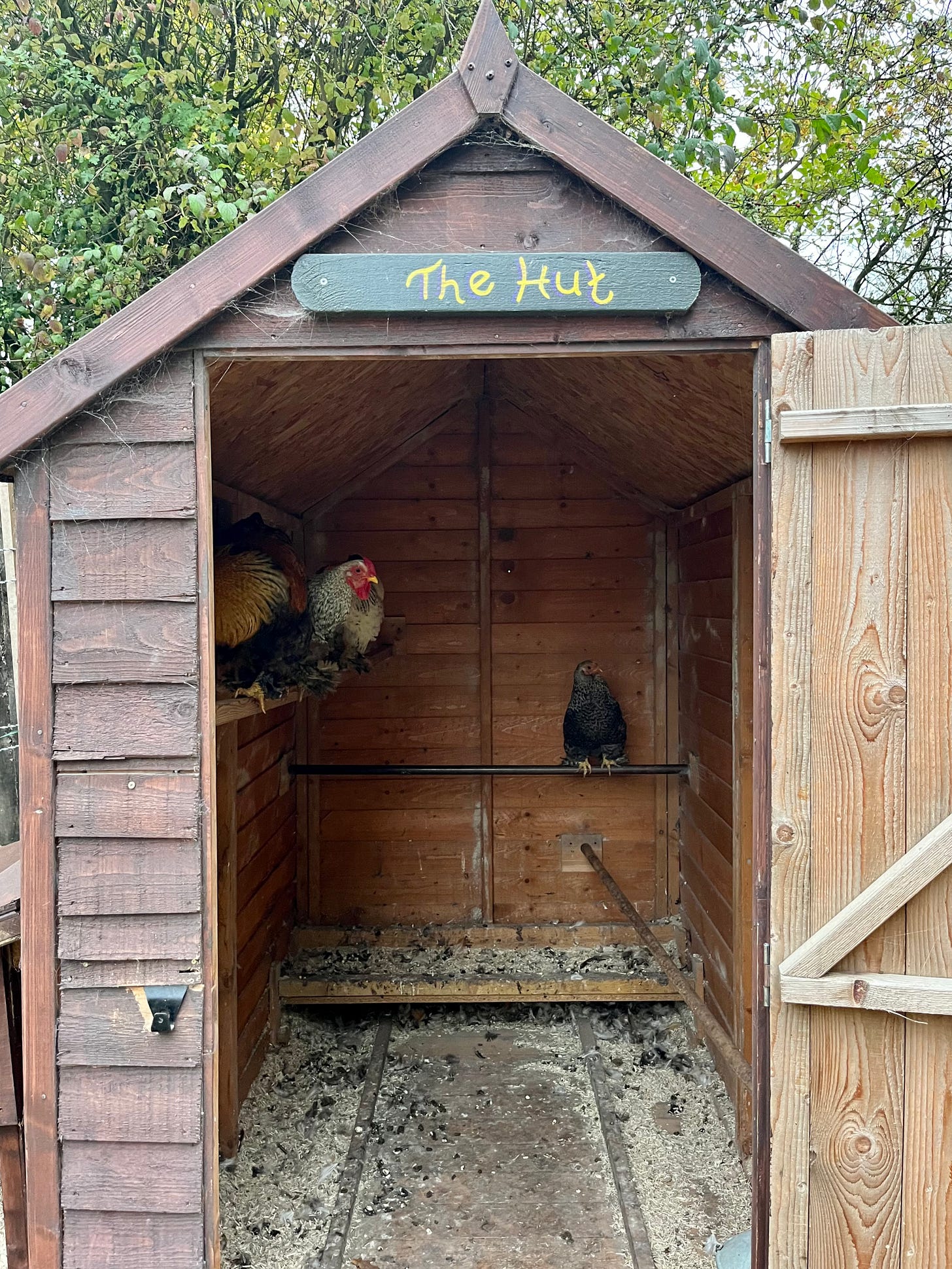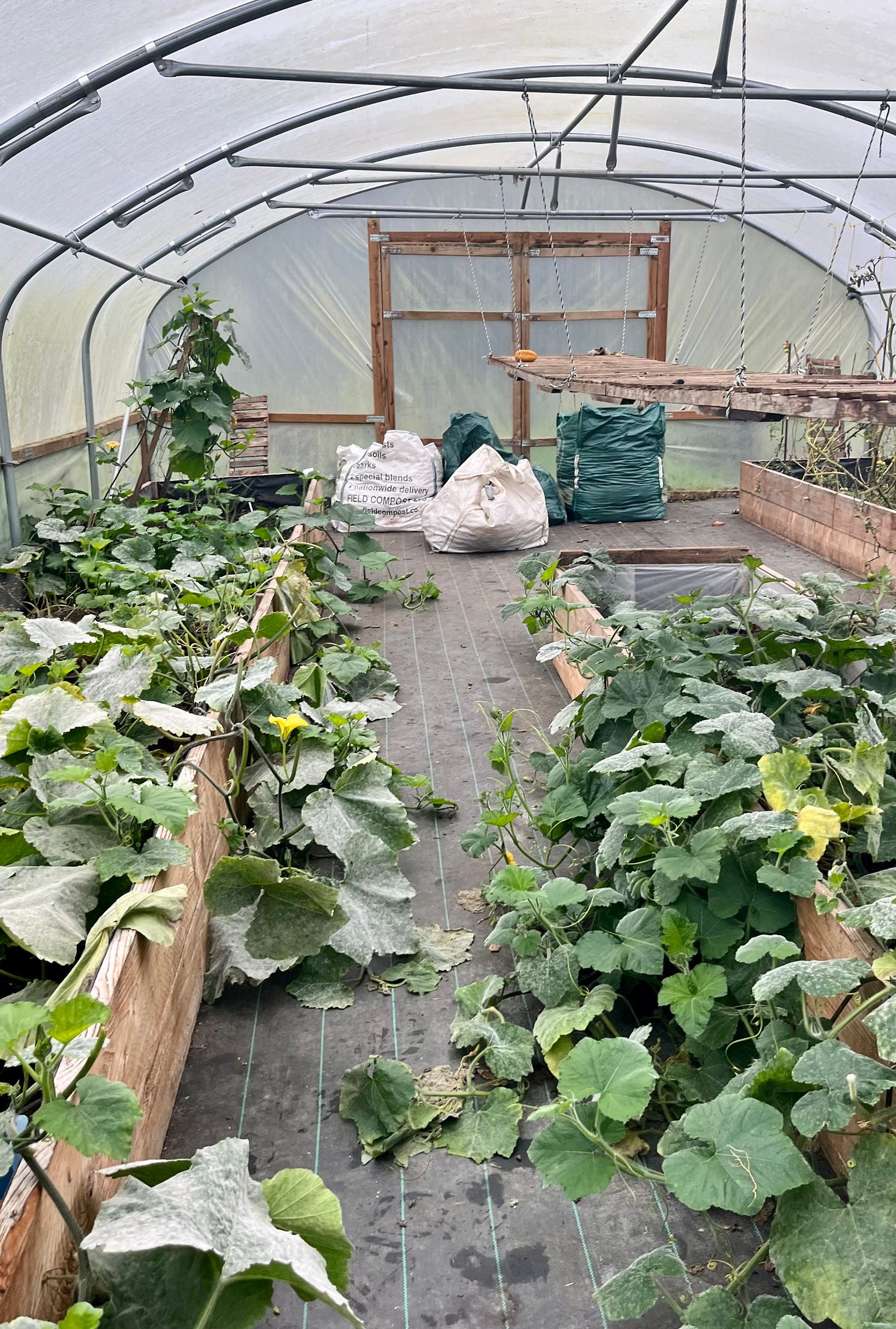For the last three weeks my husband, baby and I have been living on a slightly hippy farmstead in rural Suffolk. We’re staying in a house built in the 1300s (!), surrounded by 20 acres of woodland and farm. Another 10 adults live either in the main house or elsewhere on the land, and a dozen hens, two horses, bees, a dog, and four cats also call the farmstead home. There’s also a sizeable number of solar panels, lots of pheasants dropped of by the local gamekeeper, a very large polytunnel, and an impressive amount of composting going on. Most of us eat together each evening, sharing a rota for the cooking. It’s as eclectic as it sounds, and it’s great fun!
The slightly more permanent residents on the farm aspire to self sufficiency. To that end, it’s been a very good place to spend some time observing, helping out, and chatting with those who know a thing or two. Admittedly, their homestead is in its early stages — the owner acquired the plot three years ago and there’s a hippy, laidback approach to the tasks at hand. But it’s an ideal place to gain insight into a slower pace of life connected with the land before our family move to Ireland at the end of this year:
We’re half way through our stint on the Suffolk farm, so I thought now offered a good opportunity to share initial thoughts on the fledgling self sufficiency set up.
Hens are fab
The first point is a silly point, but that doesn’t diminish its validity. In short: hens are good fun. This farm has what might be described as “ornamental hens”, i.e., they’re exceptionally feathery and cute but don’t lay many eggs. Although this might render them less useful than desirable, particularly for the budding homesteader, simply caring for the hens helps establish a good daily routine — and seeing them cluck about the garden offers cheap entertainment for the babba.
I’m reminded of the following passage from an article on Hearth and Field I read a few months ago:
The cost of raising chickens is actually very hard to justify. After feed and other expenses, you don’t really fare any better than just buying eggs at the store. On the other hand, the act of caring for them is good, and they are useful for other aspects of the farm […] And, as chicken owners will tell you, chickens are extremely entertaining.
Meat means the death of an animal
The second takeaway is not exactly a revelation (I know where meat comes from), but more a closer confrontation with the reality of food’s journey from farm to fork.
One morning as I went to fetch grain to feed the hens, I opened the shed door to find three pheasants hung up by their feet, with small blotches of blood marking the newspaper underneath. The local gamekeeper hosts shoots on his fields, and drops off several pheasants if they have a particularly lucky day. Said pheasant will then constitute our tea a few days later.
I plucked and gutted my first pheasant this week, which felt like a rural rite of passage. Although I enjoyed the novelty of the process, it made me glad that I don’t have to pluck a bird in order to eat meat. That said, it’s probably healthy to have to do it from time to time.
Beware the frost
This week was particularly cold. Ordinarily, my awareness of the temperature might extend to me donning a hat, scarf and gloves. But here the frost meant people were busy with a list of jobs, particularly concerning vegetable crops. Now the unripened tomatoes fill trays by the kitchen window rather than linger on the vine in the polytunnel. The first frost seems to mark the end of one season and the start of the next in a way I hadn’t considered.
Britain is surprisingly sunny
The house runs on power stored by the solar panels at the start of the day and changes to mains power when it runs out. The 25 or so solar panels seem to power the house for a good few hours most days, even though we’re in November. Solar panels would never have crossed my mind as a thing to invest in (possibly because I’m not eco-minded enough) before now due to my assumption that Britain/Ireland is too cloudy to justify their investment. But I’m more interested in the sums on them now than I was before.
There’s a long road to self sufficiency
Finally, perhaps one of the biggest insights is that self sufficiency doesn’t happen overnight. The farm where we’re staying is probably self sufficient in tomatoes and chard, but that’s about it for now. They’re aiming for slow but manageable progress, which suits their needs and plans. I think this feeds into the general beginner self sufficiency advice of become self sufficient in one thing at a time, be that eggs, garlic, or even pheasant. It’s been lovely to eat meals of rabbit and homegrown courgettes, but there’s no shame in supplementing that with store bought rice (or even nutella filled pancakes). Very few people are fully self sufficient and beginning the journey to that goal doesn’t necessarily require a prohibition on supermarket junk food buys.
The main takeaway though is that I’m looking forward to the next three weeks, and even more so to starting work on our own Irish homestead in the new year!
As ever,
Portia





